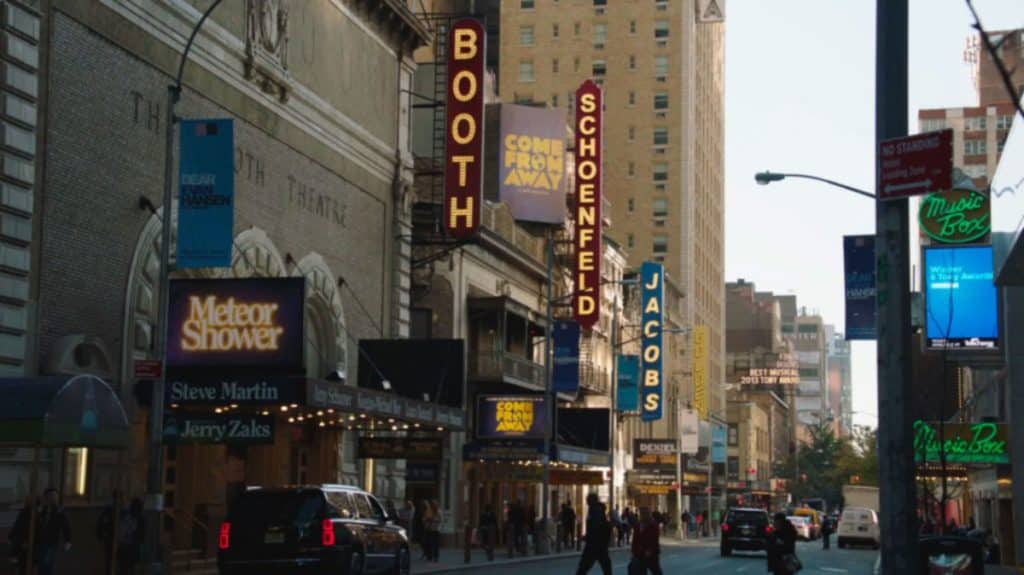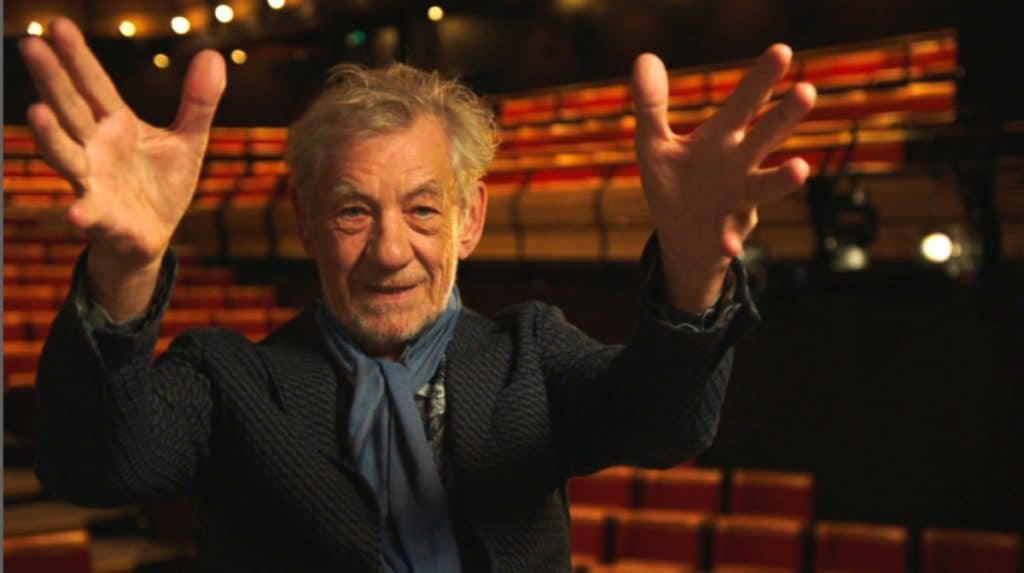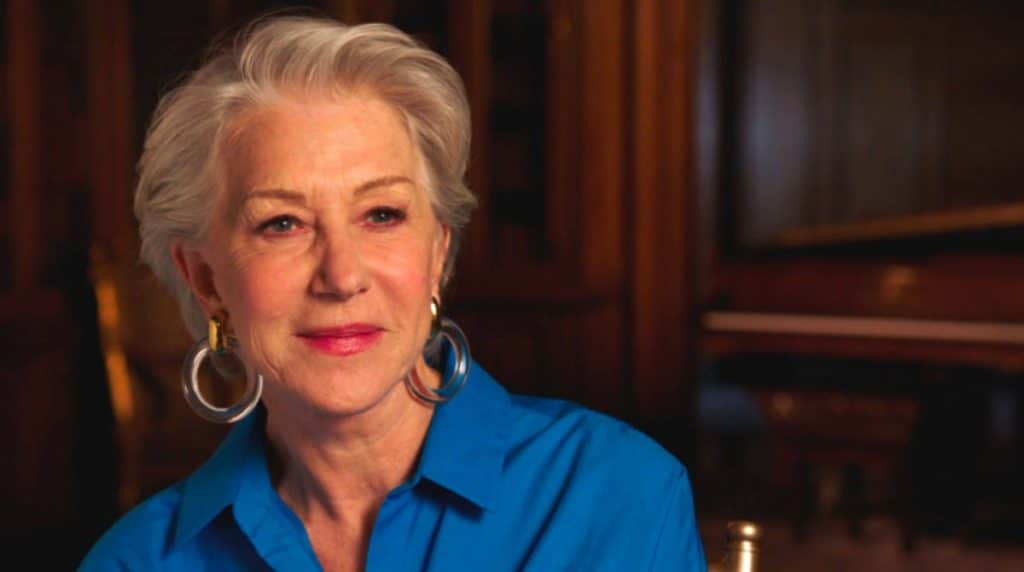Read also:
How to Watch FX Live Without CableHow To Watch AMC Without CableHow to Watch ABC Without CableHow to Watch Paramount Network Without CableOren Jacoby’s documentary takes an interesting angle on New York theater’s history, but leaves out critical context.
Where are you when you’re “on Broadway”? The name conjures images of flickering marquee lights, huddled lines brimming with anticipation, spectacular chorus numbers, actors yelling something Very Serious at each other, and the heartbeat of The American Theater. But underneath these ideal projections lie twelve concrete blocks of prime Manhattan real estate.
Oren Jacoby’s new documentary On Broadway sets out to unpack the dialectic between the ideal and material realities, charting the theatrical and civic histories of New York’s Theater District. Beginning in the 1960s when the area was “rougher,” through its “clean up,” and into the 2018-2019 season, On Broadway highlights many important uncomfortable truths that have made Broadway what it is today. Yet while Jacoby brilliantly follows the money, he noticeably neglects to follow the trash.
The pervading theme of Jacoby’s documentary is risk. In his chronology, the New York theater establishment has tipped from being theatrically and economically risky to being entirely concerned with minimizing risk at all costs. We open in 2018 with 38 new works debuting, 75% of which are doomed to close. Jacoby has gained production access to The Nap, an original play, which is perhaps one of the riskiest kinds of enterprises on Broadway today.
…while Jacoby brilliantly follows the money, he noticeably neglects to follow the trash.
Richard Bean’s play is riskier in more ways than its originality. It’s about British people but isn’t a classic. It’s about snooker, a game few people have heard of. And it also showcases the talents of one of the first openly trans actresses to star on Broadway, Chicago joy, Alexandra Billings. It’s Billings who will serve as our guidepost, who insists we learn our history to understand the significance of her moment and our moment on Broadway.
So back we travel to the end of the 1960s when the tip towards contemporary Broadway business began. Something needed to be done. Broadway was no longer the hitmaker it used to be. Newer generations found the songs and stories cliche and out-of-touch, not responding to the ongoing social changes. Now was the moment for innovation.
And herein enters the inevitable Sondheim veneration. This isn’t to say Saint Stephen isn’t due the acclaim, but that Jacoby’s history of creative change takes the usual route that anyone with a cursory interest in Broadway will know. Each generation will have a Great Work and a Great Man (or Julie Taymor) who articulates the theatrical moment in time. None of them shockers. No new talents are discovered or highlighted.

What is new, however, is Jacoby’s attention to the life of the city blocks themselves. At the turn of the 1970s, Broadway and Times Square were known for crime and proximity to sex work. Many theater doors were shuttered in part because their bourgeois audiences were too scared to stand in line. It was then that the three, count them 1-2-3, family organizations that own Broadway, the Shubert Organization, the Nederlander Organization, and Jujamcyn Theaters became desperate for “product.” And the way they saw to do that was to “clean up” the area and make it more attractive to middle-class families.
And they didn’t do this alone. They had help. If these organizations don’t sound familiar, their civic helpers might. They have names like Cuomo, Guliani, and Durst.
Despite having talking heads like Helen Mirren and Ian McKellen telling us how titillating and alive the district was, Jacoby’s very comfortable linking crime directly to sex work, particularly queer sex work, but not larger national economic trends. Jacoby somehow gets through an entire conversation about the dereliction of Broadway in the 1970s without much or any discussion of economic depression. And once we move into the 1980s, Jacoby’s moral ambivalence becomes even more apparent.
Because while certain audience groups were ready to come back, the AIDS epidemic took away a vital section of the theater talent pool and patrons alike. It still hurts. While Jacoby wants someone to take responsibility, that would include a more systemic criticism of Regan era morality which would inevitably lead to the same folks “cleaning up” Broadway.
The “out of sight, out of mind” people policy and a flippant invocation of eminent domain exhibited in the documentary by the 42nd St Development Project directly affected the AIDS crisis. It helped people not care about the folks dying on the margins, many of whom were artists. It removed their financial security, their extra funds when Broadway wasn’t paying. Creating financial stability for a wealthy few meant displacing the stability of many. Instead of feeling responsible for the people on Broadway, the corporate and civic organizers felt only responsible to the dollar.

The most radical and interesting claim Jacoby puts forward is that the British musical invasion of this period was a way of scabbing over the dearth of talent left by the AIDS crisis. He tries to paint the resentment between Broadway and West End imports as strictly envy of commercial success. But there’s enough to see that some of the resentment also comes from the life these musicals brought to an area and an industry still reeling from death.
Because it’s not like the artists had nowhere to go. As the owners of Broadway cemented their plans towards maximizing profits, the creatives on Broadway sought new spaces to experiment without the pressure of shareholders. Led by A Chorus Line’s Michael Bennett, artists turned to The Public Theater and other non-profit theaters, which fomented a new kind of creative process still in place today in which experimentation happens outside of profit motive and is then later acquired and ran for profit once proved commercially viable.
It’s also during this period—when musical theater was dominated by European imports—that Jacoby highlights the revival of American dramatic theater. With plays by August Wilson, Arthur Miller, and others, this new American theater was gritty and “real” with evocative stories of economic and racial struggles. And once audiences started looking for something new and their own, this thirst for a down and dirty realism made its way to the musical stage.
“Viva, la vie Boheme!” rowdy ragtag cafe artists yell at high-paying audiences, closing Rent’s first act. First workshopped in 1993 before finally moving to Broadway in 1996. After Tony Kushner’s Angels in America debuted in 1991 and came to Broadway in 1993, Jacoby demonstrates that there was a shift in audiences where gay post-AIDS storylines were acceptable subject matter. Rent’s success showed that rabble was bankable, and gay rabble even more so.

But Rent was tested, assured that its “realism” was palatable for Broadway’s more conservative, family-friendly, audiences before being picked up by for-profit theaters. Once Disney and other mega-corporations moved in and started attracting a different kind of audience, their tastes were catered to. After 9/11, just like the “I <3 New York” campaign some 30 years before, Broadway was nationally marketed as the heart of American culture and a safe, inoffensive place to spend money.
And so, we come to the end of Jacoby’s history of Broadway. The streets bustle with people in their Sunday best huddled lines awaiting the latest musical adaptation or poignant family drama. We’ve followed how creative ideas ebbed and flowed, how risky productions can pay off, how non-profit theater can provide a vital safety net. And we’ve followed how the owners of twelve city blocks have shaped the dreams and destinies of America’s theatrical heartland.
It’s clean. Too clean. Where did all the “trash” go? If we keep close tabs on it, a richer, and more exigent critical history appears. Because we’d see the “trash” of 42nd Street and Times Square first swept away during the capitalist “clean up” facelift, left to be killed off by governmental neglect and mistreatment during the AIDS epidemic.
If anything, Broadway has become a controlling pimp, peddling seductive products but making sure to collect overhead first.
But then a curious thing happens, a mirage of this “trash” starts to appear on the very stages that were used as justification for the “clean up,” for removing the sex workers and queer nightlife. A diluted, managed, and profitable form of “trash” became acceptable for shows. These corporate organizations have cultivated audiences that accept these “realities of life,” provided they are kept confined within a proscenium and not on the street with them after the show.
As the documentary closes, Tommy Tune says Broadway is “the hooker” that can’t be put down. But what does that mean to generations that never experienced the “grimy” adolescence of Broadway? Corporate organizations have bulldozed over history when Broadway reveled in its vice, when actors were sinners all, and anything could happen at the theater. If anything, Broadway has become a controlling pimp, peddling seductive products but making sure to collect overhead first.
David Henry Hwang says the silver lining in all of this is that corporations have realized “diversity is good business.” So, when we juxtapose that idea with Alexandra Billings’ proud restating of her own history—overcoming addiction, homelessness, being in sex work, and as an HIV+ trans woman of color, it feels as though a circle has been completed more cynically than Jacoby intended. The real bodies made to disperse, drudge away, or die during the “clean up” of Broadway have finally returned to claim a spot center stage.
On Broadway is playing in theaters now, and opens in virtual cinemas on September 10th.